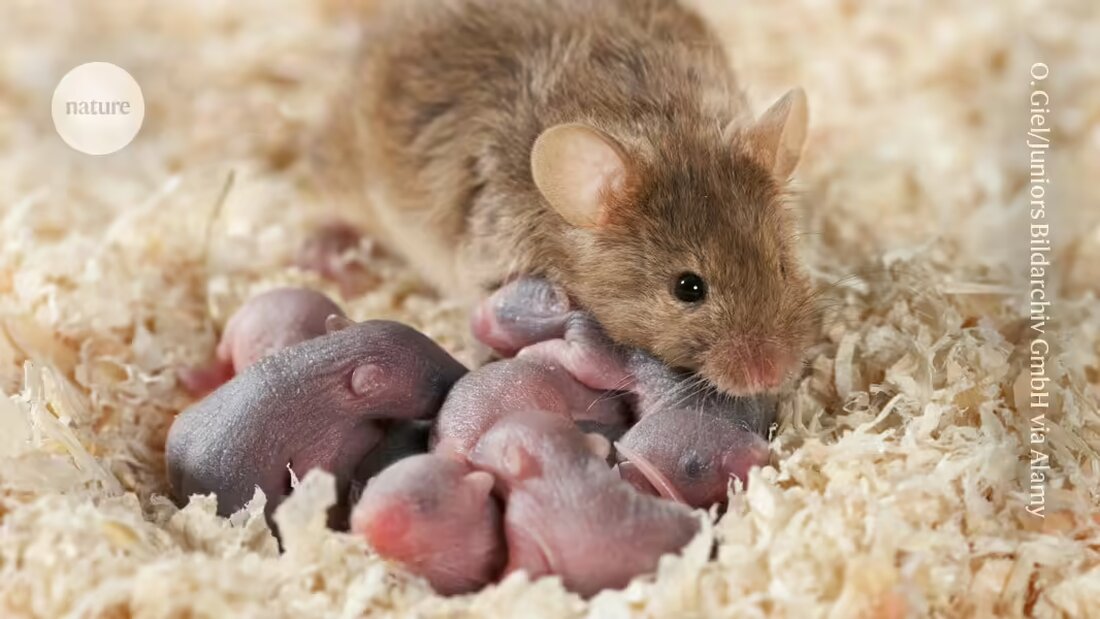Researchers have identified neurons in the brains of baby mice that allow them to form a unique, strong bond with their mother in the first days of life.
Stimulating these neurons in mouse pups that had been separated from their mother was able to mimic the calming effects of their mother's presence and reduce behaviors associated with stress.
The ones in todaySciencepublished results 1provide new clues about the formation of the mother-infant bond in mammals and could help researchers better understand how brain development influences behavior.
“We know very little about how infants’ brains make sense of their social world,” says study co-author Marcelo Dietrich, a neurobiologist at Yale University. "When I started my lab 10 years ago and wanted to research these kinds of things, people said it was illusory. It will fail. It's too difficult." Now we show that it is possible: you can do rigorous science and try to understand these mechanisms that are potentially very important for development and health.”
“I think of these neurons as the ‘I feel good about mom’ neurons,” says Catharine Dulac, a neurologist at Harvard University. “The characteristics they discovered provide a framework for thinking about people.”
Binding in the brain
Dietrich and his team examined nursing mouse pups that were between 16 and 18 days old. They used live imaging techniques to record activity in the zona incerta (ZI), a thin layer of gray matter beneath the thalamus, as the animals interacted with their mother.
The ZI processes visual, auditory and sensory information. During early development it forms connections to various brain regions, some of which are withdrawn after weaning. The researchers found that neurons in the ZI of mouse pups that produce a hormone called somatostatin were active when they interacted with their mother. Somatostatin is involved in the regulation of many other hormones and processes in the body.
To test whether the activity of these neurons was specific to mother-infant interactions, the authors observed the brains of mouse pups while they spent time with other, unfamiliar mice, including other lactating females, non-lactating females and adult males. They also tested whether the neurons responded to control objects - rubber ducks and furry, mouse-shaped cat toys. “We just bought hundreds of them on Amazon,” says Dietrich.
The somatostatin neurons did not respond to the toys but were activated to some extent while the mouse pups interacted with other adults, siblings, and other pups of the same age. But the response was not as strong as that of her mother, suggesting that these neurons have a crucial role in the development of the unique mother-infant bond.
“How these neurons recognize that this is the mother and not someone else is very fascinating,” says Dulac.
The researchers also found that activating these neurons reduced stress responses in 11-day-old puppies that had been separated from their mother: These puppies cried less and had lower levels of the stress hormone corticosterone than puppies in which the neurons were not activated. Isolated pups with activated somatostatin neurons also learned to form positive associations with certain smells, similar to how they did when their mother was present.
Shifting circuits
Although the study provides evidence that somatostatin neurons in the ZI are involved in bonding and stress reduction in baby mice, the authors point out that studies in adult animals have shown different results.
Activating these neurons in adult mice increased those associated with anxiety 2and fear 3associated reactions. “This is really very impressive,” says Johannes Kohl, a neurologist at the Francis Crick Institute in London. “It raises the broader question of whether these are really the same cells between newborns or pre-weaning and adults, or whether they are the same cells and they simply radically change their circuit integration and therefore their role.”
The authors say these neural circuits may undergo changes as the mice age to help them adapt to different pressures throughout their lives. “Following these neurons longitudinally throughout development could be very exciting to understand how they then assume their adult roles,” says Kohl.

 Suche
Suche
 Mein Konto
Mein Konto

